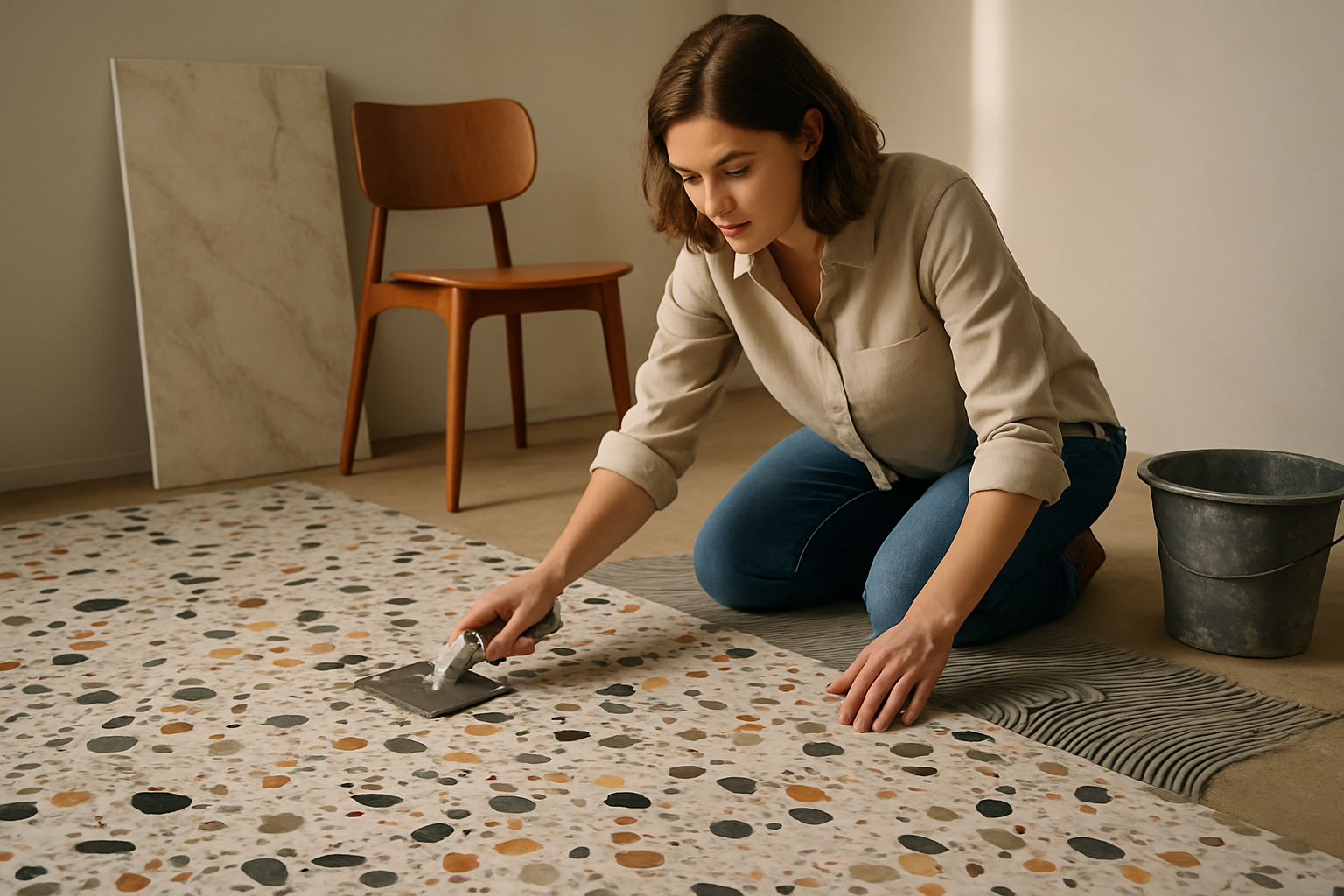Terrazzo Renaissance: Elevating Modern Interiors with Ancient Charm
Stepping into a room adorned with terrazzo is like walking on a sea of colorful confetti frozen in time. This ancient flooring technique, once relegated to Italian palazzos and mid-century lobbies, is experiencing a vibrant resurgence in contemporary home design. As homeowners and designers seek unique ways to infuse personality into spaces, terrazzo's versatility and visual appeal are capturing imaginations and transforming interiors from mundane to magnificent.

The Storied Past of Terrazzo
Terrazzo’s origins can be traced back to 15th century Venice, where marble workers would use leftover stone chips to create durable flooring for their own homes. These early terrazzo floors were set in clay and polished with goat milk to achieve a smooth surface. The name terrazzo, meaning terrace in Italian, reflects its initial use in outdoor spaces.
As the technique evolved, cement replaced clay as a binding agent, and mechanical grinding tools improved the finish. By the 20th century, terrazzo had become a popular choice for public buildings due to its durability and low maintenance requirements. The Art Deco movement of the 1920s and 30s embraced terrazzo, incorporating it into bold geometric designs that defined the era’s aesthetic.
Modern Terrazzo: A Canvas for Creativity
Today’s terrazzo bears little resemblance to its humble beginnings. Advanced manufacturing processes have expanded the possibilities, allowing for an infinite array of colors, patterns, and materials. While traditional terrazzo consisted of marble chips in cement, modern variants incorporate everything from recycled glass and metal to mother of pearl and semi-precious stones.
Designers are pushing the boundaries of terrazzo’s application, moving beyond flooring to create statement walls, custom furniture, and even delicate jewelry. This versatility has made terrazzo a favorite among those looking to add a touch of artistry to their living spaces without overwhelming the overall design scheme.
The Sustainability Factor
In an era where sustainability is paramount, terrazzo’s eco-friendly credentials are contributing to its popularity. Many terrazzo products are made using recycled materials, diverting waste from landfills and giving new life to discarded glass, plastic, and metal. The longevity of terrazzo installations also means less frequent replacements, reducing the environmental impact over time.
Furthermore, terrazzo’s thermal properties make it an excellent choice for homes with radiant heating systems, enhancing energy efficiency. As homeowners increasingly prioritize sustainable living, terrazzo offers a beautiful solution that aligns with environmental values.
Integrating Terrazzo into Home Design
The key to successfully incorporating terrazzo into home design lies in balance and thoughtful application. A terrazzo floor can serve as a stunning focal point, particularly in open-plan living areas where its seamless surface creates a sense of continuity. In more intimate spaces like bathrooms, terrazzo countertops or shower walls add a touch of luxury without overwhelming the senses.
For those hesitant to commit to permanent installations, terrazzo-inspired accessories offer a low-risk way to embrace the trend. From throw pillows and area rugs to wallpaper and tableware, these items allow homeowners to experiment with terrazzo’s playful aesthetic without a major renovation.
The Craftsmanship Behind the Beauty
While pre-cast terrazzo tiles have made the material more accessible to homeowners, true terrazzo artisans continue to practice their craft, creating bespoke installations that are works of art in their own right. The process of laying terrazzo in situ requires skill, patience, and an eye for detail. Artisans carefully blend aggregates with a cement or resin binder, pour the mixture, and then grind and polish the surface to reveal the intricate pattern beneath.
This level of craftsmanship adds a layer of uniqueness to terrazzo installations, ensuring that no two surfaces are exactly alike. For homeowners seeking a truly one-of-a-kind feature for their space, working with a terrazzo artisan can result in a personalized masterpiece that tells a story and becomes a cherished part of the home’s identity.
Terrazzo in the Digital Age
As with many traditional crafts, technology is playing a role in terrazzo’s evolution. Digital design tools allow for precise planning of patterns and color combinations, enabling homeowners to visualize the final product before installation begins. 3D printing technology is also being explored as a means of creating intricate terrazzo-inspired objects and surfaces, opening up new avenues for customization and design.
Social media platforms have contributed to terrazzo’s resurgence, with interior designers and influencers showcasing innovative applications of the material. The visually striking nature of terrazzo makes it highly Instagram-worthy, fueling its popularity among younger generations who seek out unique design elements for their homes.
The Future of Terrazzo in Home Design
As terrazzo continues to captivate designers and homeowners alike, its future in home design looks bright. The material’s adaptability to changing aesthetic preferences ensures its relevance in diverse interior styles, from minimalist to maximalist. Ongoing innovations in materials and manufacturing processes are likely to expand terrazzo’s capabilities further, potentially leading to new applications in furniture design, outdoor spaces, and even wearable art.
The terrazzo renaissance is more than just a passing trend; it represents a renewed appreciation for craftsmanship, sustainability, and the beauty of imperfection. As we look to create homes that reflect our individuality and values, terrazzo offers a canvas for self-expression that is both timeless and thoroughly modern. Whether adorning floors, walls, or decorative objects, terrazzo’s speckled beauty continues to enchant and inspire, proving that some design elements truly stand the test of time.





